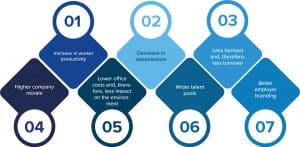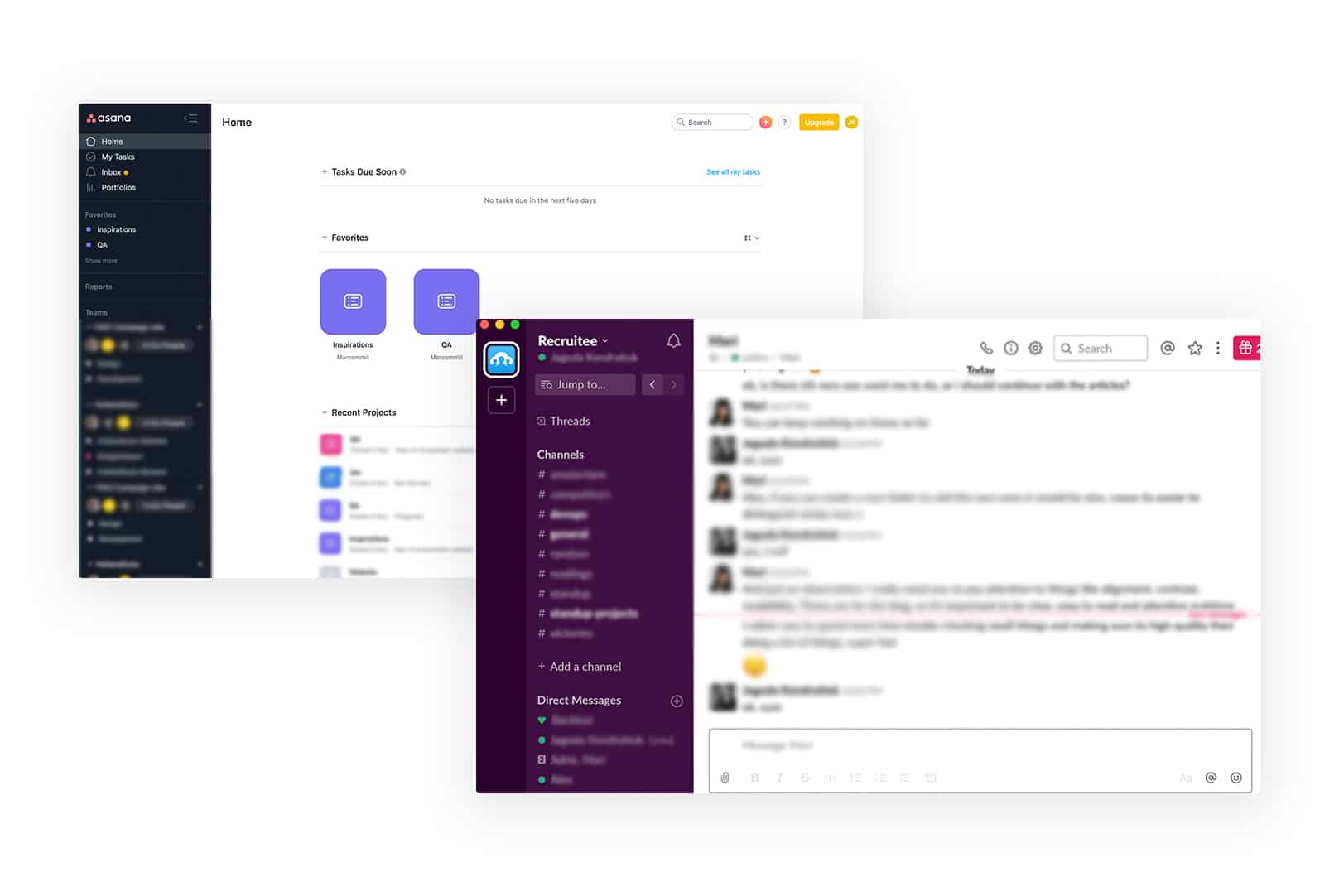Digital recruitment is only getting started. Switching to a digital strategy may seem obvious. After all, *NSYNC’s hit song “Digital Get Down” was released in 2000. So why are we still talking about ‘going’ digital? The truth is, even in 2021, we are still far from normalizing digital recruitment.
Why? Perhaps it’s down to not understanding how to transition to digital recruitment. From digital recruitment tools to digital recruitment strategies, entering the digital recruitment world can feel overwhelming, which puts many people off. But it doesn’t need to be so difficult to digest.
What is digital recruitment?
Don’t fall into the trap of thinking digital recruitment is simply posting jobs on online job boards. This is but a tiny part of the overall puzzle. Digital recruitment uses a wide range of online tools and strategies to support your recruitment process, from the beginning to the end. This may include:
- Posting a job online via job boards
- Posting on career websites
- Recruitment via mobile
- Creating and using online assessments and questionnaires
- Using social media for recruitment
In a nutshell, digital recruitment is when you use technology and the online world to source, attract, analyze, and ultimately hire candidates for your vacancies.
Digital recruitment vs. “regular” recruitment
On-site interviews and employees dominate the game. You have to prepare for remote hiring before jumping in.
However, the adjustments you must make are worth it. You don’t have to completely forgo regular recruitment tactics. Digital recruitment adds just in a couple of tweaks. It takes your recruitment strategy from ‘good’ to ‘great’, adding an extra layer of development in the technological world.
These digital recruitment tweaks include:
- Job boards targeting remote talent
- Job descriptions with specific skills for virtual employees
- Interview accommodations (think: Skype, online tests, etc.)
- Technology adjustments (for the entire team)
- Laws and regulations surrounding contract workers, location, etc.
This will, of course, vary depending on the tech skills of your current team. And it can vary by situation and geographical location.
What are the benefits of digital recruitment?
It’s time to start thinking about digital recruitment strategies. And it will benefit more than just your employees! Employers reap the benefits of a virtual workforce, as well. Some of these benefits include:

- Increase in worker productivity
- Decrease in absenteeism
- Less burnout and, therefore, less turnover
- Higher company morale
- Lower office costs and, therefore, less impact on the environment
- Wider talent pools
- Better employer branding
These are all selling points that you can offer as an employer. Potential candidates are likely to appreciate these benefits over the ever-popular ping-pong tables.
From eco-friendly options to better work/life balance, digital recruitment is a smart step in the right direction. You’ll see an uptick in candidates along with improved employee performance. So, what are you waiting for?
The perfect remote candidate
Remote employees will look a little different than on-site ones. And no, we don’t mean physically (although they are sort of invisible, in that sense!). To make up for their “invisibility”, remote workers must have different characteristics that allow them to work digitally, effectively. A few examples of things to look for during digital recruitment are:
- Self-discipline
- Results-based tasks
- Less need for supervision and micro-management
- Great written communication skills
- Tech setup and knowledge
- Flexibility in schedule and thinking
- Time management
While these skills are important for every employee, they become more pertinent when you are recruiting for a specific remote role. There are certain people that thrive in digital environments. However, a willingness to learn is invaluable. Core personality changes are difficult to make, but it is possible to change your nature.
However, potential talent has to be already well on their way to making this change for the digital relationship to work well! You, as the employer and/or recruiter, will also have to switch up your mindset for digital recruitment to be successful. Is it possible that these changes will come more quickly in the future? Will it become automatic?
Making the switch: fully virtual
It may seem to you like a giant leap to become a fully virtual team. However, it’s not necessary to be 100% virtual. What you can do, though, is take steps to ensure that you could operate completely online if need be! After the pandemic, many companies were forced to pivot their organization and workforce to remote working, and had to learn quickly. With COVID19 and its side effects remaining a part of our lives, it’s almost unavoidable to set up your company for remote work as a preventative measure.
While there may be some companies that this may seem impossible for (think: bakeries), there are at least whole departments that you can focus on moving online. It’s crucial to get everyone on your team using the same tech. Keep a digital trail of projects using apps like Asana and Slack. This way, data silos are avoided, and you are all on the same page (remote or otherwise).

You can become a fully virtual team if you’d like to! It’s not outside the realm of possibility anymore. A digital recruitment mindset is the first step to change.
How to build a digital recruitment strategy
Creating, developing, and launching a digital recruitment strategy can offer your company a whole world of benefits. However, should you launch a half-baked strategy, it can actually add to your workload rather than reduce it. Worse still, it can set a negative example of your company. So, it’s crucial to perfect your digital recruitment strategy. Here are some tips.
1. Consistent content production
As with any business, content is king. It’s fundamental to nail your messaging when posting consistent content, as each organization will have it’s own voice. You could share company stories, employee and team information, or general tips from the industry.
You’ll need to also decide where to share this content. This needs to surround the people you’re aiming to attract, and where they spend most of their time online. This could be:
- Your organization’s website or blog
- Via guest blogging (on other website’s blogs)
- Social media channels
- Via an email newsletter
With content, it’s crucial to deliver what’s in demand. Thus, it’s crucial to research the audience you’re trying to reach, first. Understand the type of content that resonates most with them via competitor research. And, don’t be afraid to ask them, too!
2. Build a strong social media presence
Social media is a massive part of our lives. Whether you’re aiming to recruit the younger generation or the more experienced and slightly older, there are over 3.6 billion people who are actively engaging on social media.
But the thought of building a strong presence across multiple social media platforms - Instagram, Facebook, Twitter, LinkedIn, YouTube etc - is overwhelming. It could suck up all your time very easily.
So, that’s why it’s fundamental to understand, once again, where your audience ‘hangs out’.
The younger generation are more active on Instagram, for example, while Facebook caters a slightly more ‘mature’ audience.
It’s important to first decide on your social media distribution channels by conducting market research. Explore your ideal candidate, and look into which social channels take up most of their time.
You’ll then need to build a presence. This can take time, but the key is in consistency. Publish social content through text posts, images, and videos, and don’t forget to engage with your audience.
This is a time consuming digital recruitment strategy, but the results are more than worth it. It’s especially useful to convey your organization’s core values, allowing candidates with a strong cultural fit to apply for your vacancies when you publish them via social media.
3. Use digital tools to enhance the candidate experience
There are many tools out there that you can use to better your candidate’s experience when applying for a role. The first thing you should do is apply for the role yourself.
It’s the only way to understand exactly what your candidates experience when they submit an application.
Take notes, seeing where things feel ‘flat’ or ‘slow’. You’ll also need to look out for personalization. You want to show your candidates from the very beginning that they are well respected and seen as an individual, rather than ‘just another candidate’.
You can then use digital tools, like personality quizzes and assessments, to make the experience more personalized and memorable to each candidate.
4. Focus on your company’s marketing as a recruiter
Word-of-mouth is a massive contributor to standing as an authoritative figure within the recruitment industry. However, it’s not enough to rely on. Instead, think about your recruitment in terms of marketing this message.
You’ll want to build upon your branding as a new angle: as an employer.
This can take time, but it really is worth it. If the online world view your organization as one they’d love to work for, you can be sure to receive applications in buckets, with the enthusiasm to match.
Of course, a piece of the puzzle for this strategy revolves around your messaging. It’s important to understand what you want to say, and more importantly, how you want to say it before you publish anything. Your voice needs to be memorable, welcoming, and convey the brand as an employer effectively.
Digital recruitment tips
There are several steps that you can take to ensure your digital recruitment efforts are not in vain. Here are some insider tips:
- Learn from other successful virtual teams, like Hotjar
- Introduce new tech and get the team on board
- Make your core values appear on your careers site
- List skills for potential remote employees
- Get collaborative with recruitment (talent acquisition software makes this easier)
- Train your team to use the digital tools you have selected
- Ensure to always track metrics and data to ensure remote work is having a positive impact over a certain period of time. If not, it’s time to switch up your strategy.
- Keep an open mind!
Input in the above blog post was provided by you, our #TAinnovators community!
Shoutouts:
Join us on Wednesdays at 11 a.m. ET by following #TAinnovators!
#TAinnovators is a live Twitter chat that delves into the talent acquisition world and encourages discussion of trending recruitment topics. Follow @Recruitee for updates.


.jpg?width=1000&name=68dcf46e0449bcd850be62bb_%5BEN%5D%20Blog%20header%20-%20Whatsapp%20hiring%20(1).jpg)

.jpg?width=1000&name=66dad5ff73bd7019883f0a32_white-details-of-puzzle-on-yellow-background-busi-2021-12-21-18-51-46-utc%20(1).jpg)


